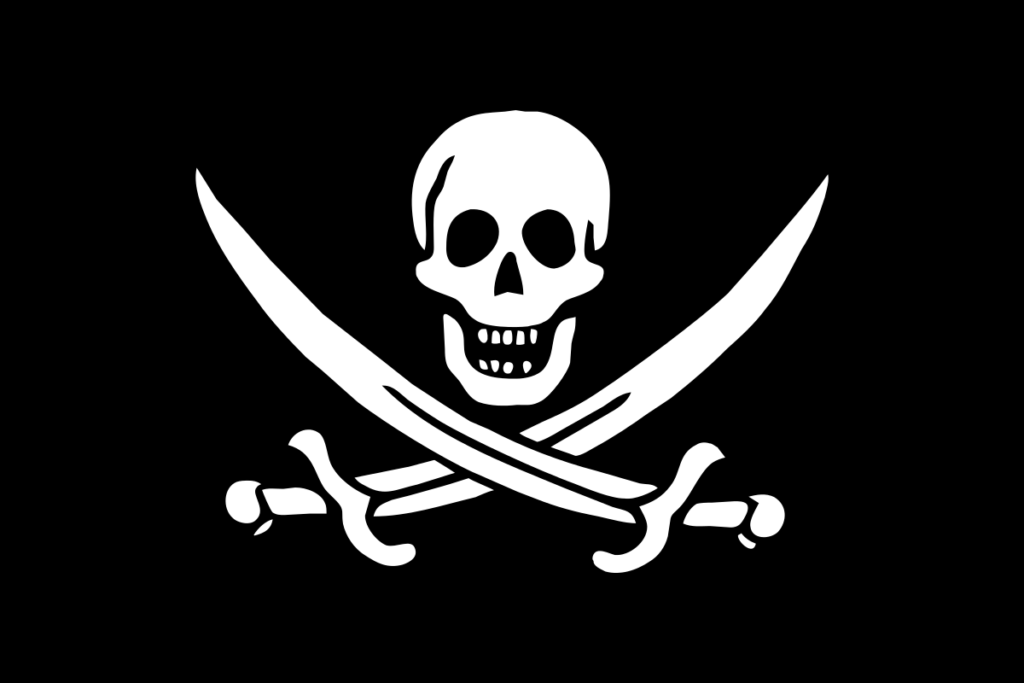Few of us want our babies to grow up to be pirates. When it comes to social responsibility, compassion, and moral rectitude, practically anybody is a better role model. Pirates fight with cutlasses, use objectionable language, consume unhealthy foods and beverages, and steal stuff. They are totally reprehensible.
No wonder kids love them.
Table of Contents
SCIENCE, MATH, AND PIRATES
| It is possible to become a certified pirate at MIT. (Yes, really. A certified pirate.) Students who take four physical education courses conferring piratical skills – pistol, archery, sailing, and fencing – are officially deemed pirates and given a printed certificate to that effect. Read about it here. |
|
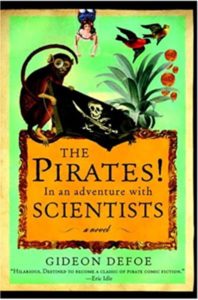
|
As well as athletic, pirates are also surprisingly scientific. (Well, sort of.) In Gideon Defoe’s clever and hysterically funny The Pirates! In an Adventure with Scientists (Pantheon, 2004), the pirates – known only by descriptors (the pirate with gout, the pirate with the accordion, the pirate with a scarf) – under the command of their luxuriantly bearded, but somewhat dim, Captain, mistakenly board the H.M.S. Beagle, believing it to be loaded with gold. After sinking the ship, the shamefaced pirates transport Charles Darwin and Captain Fitzroy back to London, where they crash a meeting of the Royal Society, rescue a damsel in distress, and battle the evil Bishop of Oxford in the Mineral Room of the Museum of Natural History. (The Bishop and the Pirate Captain fling element samples at each other according to atomic weight.) There’s even a tongue-in-cheek list of Comprehension Questions at the back of the book. For ages 12 and up. |
| Sequels, with similarly zany mixes of history and science, include The Pirates: In an Adventure with Ahab, The Pirates! In an Adventure with Napoleon, and The Pirates! In an Adventure with Communists. | |
| See science writer Jennifer Ouellette’s A Pirate’s Life for Me for a discussion of the real science connections in Defoe’s The Pirates! | |
| How about pirates and math? Ian Stewart’s A Puzzle for Pirates from Scientific American’s Mathematical Recreations column is a strategic and logical challenge for high-school students and math buffs. | |
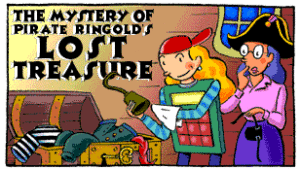
|
The Mystery of Pirate Ringold’s Lost Treasure is a fraction problem for treasure hunters on board the lost pirate ship Grand Looter. |
| Place Value Pirates is an interactive game in which kids identify decimal places by (bloodlessly) stabbing the proper pirate with a cutlass. | |
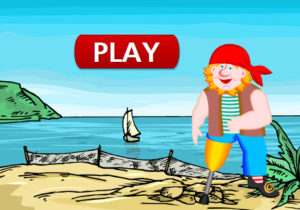
|
Walk the Plank is an exercise in adding and subtracting integers (negative and positive numbers to three places). Get the right answers and a professor goes in the drink. |
IMAGINARY PIRATES
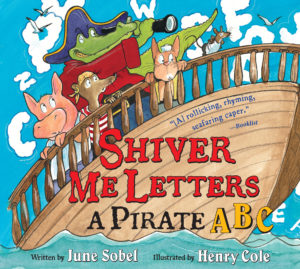
|
In June Sobel’s Shiver Me Letters (Sandpiper, 2009), an animal pirate crew (captained by a crocodile with a hook) is out to capture all the letters of the alphabet. A clever alphabetical adventure with a simple rhyming text, punctuated with piratical roars of “R!” For ages 3-7. |
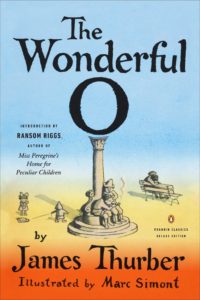
|
The masterpiece of alphabet-plundering piracy, however, is certainly James Thurber’s The Wonderful O, originally published in 1957. (It was reissued in a beautiful edition in 2009 as part of the NYR Children’s Collection.) A mix of marvelous word play, poetry, poignancy, and humor, this is the story of a pirate named Black who – ever since his mother was fatally stuck in a porthole – has despised the letter O. Landing on the island of Ooroo in search of treasure, Black and gang proceed to take over and to expunge the offensive letter from the language. Soon bakers have no dough; goldsmiths, no gold; blacksmiths, no forges; candymakers, no chocolate; and candlemakers, no tallow – and “A man named Otto Ott, when asked his name, could only stutter.” Still, the islanders are determined that four O words must not be lost: hope, love, valor, and – most important of all – freedom. For ages 8 and up. |
| Also see Words, Word Play, and Grammar. | |
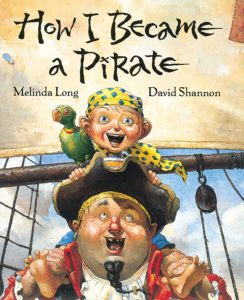
|
In Melinda Long’s How I Became a Pirate (Harcourt, 2003), Jeremy Jacobs is building a sandcastle at the beach when a shipload of pirates shows up, looking for the Spanish Main (“We must have taken a wrong turn at Bora Bora.”) Off Jeremy goes for a stint on board – which includes staying up late, never eating vegetables, and learning to say “Arrr!” However, there’s no tucking in at night and no bedtime story, so eventually Jeremy decides he’d be better off at home – though before he and the pirates part ways, he helps them find a perfect place to bury their treasure. For ages 3-8. |
| There’s a sequel – Pirates Don’t Change Diapers (Harcourt, 2007) – in which pirate captain and crew return for their loot and disastrously wake up Jeremy’s baby sister, Bonney Anne. | |
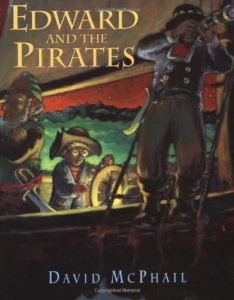
|
In David McPhail’s Edward and the Pirates (Little, Brown Books for Young Readers, 1997), Edward – a bookworm who wears enormous glasses – is reading about pirate treasure when a crew of pirates bursts into his bedroom, insisting that Edward’s book shows where their treasure is buried. (It’s a nice plug for the benefits of reading: the pirates are in trouble because they can’t.) For ages 3-8. |
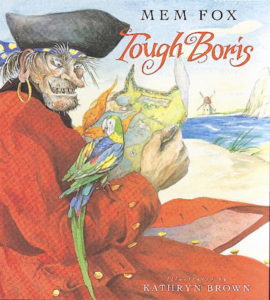 |
Mem Fox’s Tough Boris (Sandpiper, 1998) is the story of the fierce and evil-looking pirate Boris – who nonetheless cries when his pet parrot dies. For ages 3-7. |
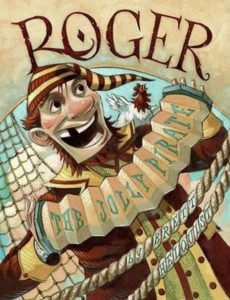
|
Brett Helquist’s Roger, the Jolly Pirate (HarperCollins, 2007) is a zanily twisted account of how the skull-and-crossbones pirate flag came to be. Cheerful Roger – who grins instead of growling – is banished to the hold whenever there’s a battle. Hoping to ingratiate himself with his dismissive mates, Roger bakes them a cake – which promptly explodes, shooting a ghostly flour-covered Roger across the deck. The sight terrifies the enemy Admiral and his men into abandoning ship, and jolly Roger becomes a hero. In recognition of Roger and his cake, the grateful pirates stitch up a commemorative flag. For ages 3-7. |
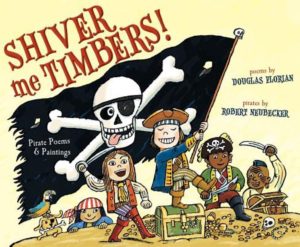
|
Douglas Florian’s Shiver Me Timbers (Beach Lane Books, 2012) is a collection of 19 funny illustrated poems about pirates (“rude, crude dudes with attitude”). For ages 5 and up. |
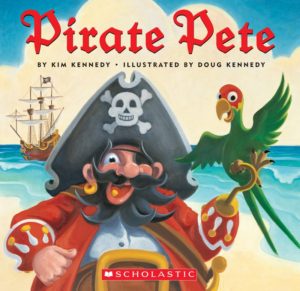
|
Pete, of Kim Kennedy’s Pirate Pete (Harry N. Abrams, 2002), and his parrot pal steal the Queen’s treasure map and set off to look for gold, landing on island after island – and being foiled time and time again. (The hoped-for pot of leprechaun gold on Clover Island, for example, turns out to contain Irish stew.) They finally find genuine treasure on Mermaid Island, only to be caught in the act by the furious Queen, who takes the treasure and leaves Pete and parrot marooned. Luckily she forgets about Pete’s rowboat – which allows the piratical pair to paddle off into a couple of sequels. For ages 4-8. |
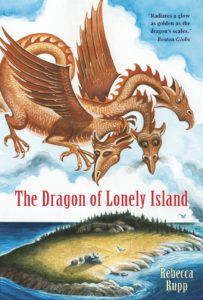
|
Rebecca Rupp’s Dragon of Lonely Island (Candlewick Press, 2002) – I can’t help but mention it – includes a pirate adventure. Dragon is set on an island off the coast of Maine, where three visiting children discover, in a cave on a hilltop, a three-headed dragon. The dragon has the ability to tell wonderful stories from its past that make listeners feel as though they were really there. One of these is the story of young Jamie Pritchett, kidnapped by a pirate crew and taken to sea as their cabin boy. When the pirates land on a desert island, Jamie runs away – and finds a treasure hoard, presided over by a dragon. For ages 5-11. |
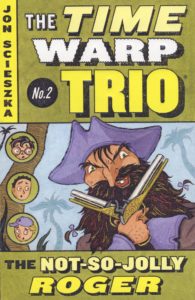
|
In Jon Scieszka’s The Not-So-Jolly Roger (Puffin, 2004), second in the giggle-provoking Time Warp Trio series, Fred, Sam, and Joe – using the magical Book, the gift of Joe’s magician uncle – wish for buried treasure and end up in the 18th century as captives of Edward Teach, the formidable pirate known as Blackbeard. For ages 7-11. |
| Visit Time Warp Trio: Pirates for interactive games and activities to accompany The Not-So-Jolly Roger. | |
| See Pirates for a lesson plan with background information, hands-on activities, and a resource list for The Not-So-Jolly Roger. | |
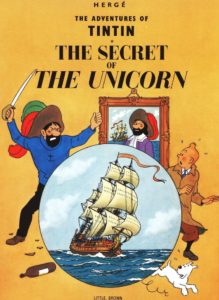
|
In Hergé’s The Secret of the Unicorn (Little, Brown and Company, 1974), boy reporter Tintin (always accompanied by his faithful dog, Snowy) attempts to buy a model sailing ship for his friend Captain Haddock – and promptly becomes entangled with thieves, secret treasure, and the exciting history of Captain Haddock’s ancestor, Sir Francis, and his encounter with the dread pirate Red Rackham. The story continues in Red Rackham’s Treasure. The Tintin books, written in comic-strip format, are great reads, with challenging (and funny) plots and dialogue. |
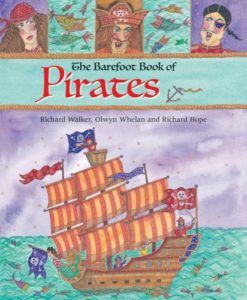
|
Richard Walker’s Barefoot Book of Pirates (Barefoot Books, 2008) is a gorgeously illustrated collection of seven multicultural pirate tales, among them “The Kobold and the Pirates” from Germany, “Music Charms the Pirates” from Japan, and “The Ship of Bones” from Morocco. For ages 8-12. |
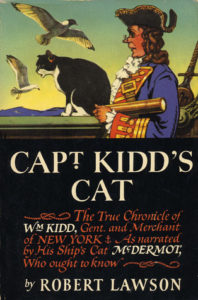
|
Robert Lawson’s Captain Kidd’s Cat (Little, Brown and Company, 1984) – originally written in 1956 – is the story of “Wm. Kidd, Gent.” as told by his ship’s cat, McDermot, a jaunty type who wears a ruby earring in one ear. This is a clever tongue-in-cheek biography in the style of Lawson’s Ben and Me (the life of Benjamin Franklin, as related by his mouse, Amos) and Mr. Revere and I (the life of Paul Revere, as told by his horse, Scheherazade, late of the British army). Unfortunately – Arrr! – it’s out of print, but is still available from libraries and used-book suppliers. Well worth tracking down. For ages 8-12. |
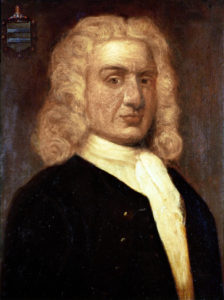 |
For the real scoop on Captain Kidd, see Captain William Kidd – the unluckiest pirate in history. |
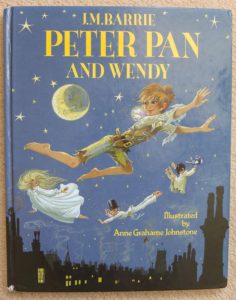
|
J.M. Barrie’s Peter Pan and Wendy (Sterling, 2010) is a reissue of Barrie’s original 1911 story – which I highly recommend in lieu of later adaptations. The story is deeper and more compelling, and the wording much richer. It’s also, however – be warned – politically incorrect: for example, it’s a hotbed of gender stereotypes (Wendy doesn’t get a cutlass) and Tiger Lily’s tribe is collectively referred to as “redskins.” Still, it would be a shame to miss a wonderful classic over this; and the questionable bits are great springboards for discussion. |
| The full text of Barrie’s Peter Pan is online here. |
|
| The Peter Pan Lesson Plans website has discussion questions and extension activities categorized under English, Social Studies, Math, Science, and Character Education. | |
| Design a flying human! See If Peter Pan Can Fly, Why Can’t I? for a multifaceted lesson plan on animal flight for grades 2-6. | |
| From the Core Knowledge Foundation, see this multidisciplinary 16-lesson unit study on Peter Pan. Targeted at grade 2. | |
| Finding Captain Hook’s Treasure is a map-based exercise for grades K-5. | |
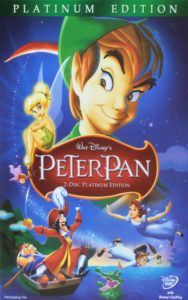
|
There are numerous movie takes on Barrie’s Peter Pan, among them the 1953 Disney cartoon version (rated G); a 2003 live-action version (PG); Hook (1991), directed by Steven Spielberg, in which a grown-up Peter Pan (Robin Williams) returns to Neverland after his children are kidnapped by Captain Hook (PG); and the 2015 Pan, an adventure story in which Peter, a 12-year-old orphan, is spirited away to Neverland to battle the pirate Blackbeard (PG). |
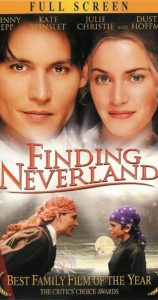 |
The 2004 film Finding Neverland with Johnny Depp (as Barrie) and Kate Winslet is the story of the family who inspired Barrie to create Peter Pan. Rated PG. |
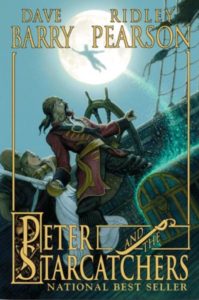
|
Dave Barry and Ridley Pearson’s Peter and the Starcatchers (Perfection Learning, 2006) is an explanatory prequel to J.M. Barrie’s Peter Pan for readers ages 10 and up. Fourteen-year-old Peter is one of several orphaned boys on board the ship Never Land, all destined for slavery on the island of Rundoon, ruled by evil King Zarboff. Also on board is young Molly Aster who proves to be a “Starcatcher,” traveling with a trunk filled with magical starstuff – a substance that confers, among other things, the ability to fly. When pirates, captained by the vicious Black Stache, get wind of the magical cargo, there’s a chase and a pitched battle that ends with the Never Land wrecked on a desert island. There the starstuff proceeds to do its magical stuff, and Peter (at least temporarily) defeats Black Stache by slashing off his hand (soon to be replaced with a hook). There are several sequels. |
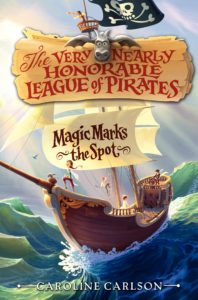
|
I love this one! Hilary Westfield, the heroine of Caroline Carlson’s hilarious The Very Nearly Honorable League of Pirates (HarperCollins, 2013) is determined to become a pirate, even thought the VNHLP refuses to admit girls. Undaunted, Hilary runs away from Miss Pimm’s Finishing School for Delicate Ladies and – her talking gargoyle in tow – joins up with Jasper Fletcher, Terror of the Southlands. And off they go in search of magical buried treasure. Several sequels. For ages 8-12. |
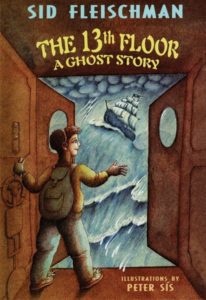
|
In Sid Fleischman’s The Thirteenth Floor (Greenwillow Books, 2007), young orphan Buddy Stebbens and his attorney older sister Liz, struggling to save their family home, wish that they had the fabled treasure of their pirate ancestor, Captain Crackstone. Lured by a mysterious answering machine message, they take separate elevator trips to the thirteenth floor of an old building downtown – and find themselves transported to the 17th century. Buddy ends up on board Crackstone’s pirate ship, sailing toward Boston – where, upon arrival, he finds Liz embroiled in the Salem witchcraft trials. For ages 9-12. |
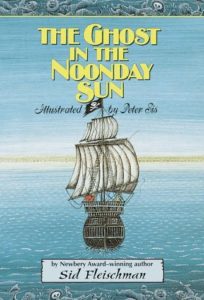 |
Also by Sid Fleischman, see The Ghost in the Noonday Sun (Greenwillow Books, 2007), the story of young Oliver Finch, born with the ability to see ghosts. Oliver is kidnapped by the notorious pirate Captain Scratch who plans to exploit Oliver’s strange talent to find buried treasure. For ages 9-12. |
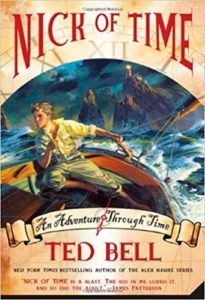
|
Ted Bell’s Nick of Time (Square Fish, 2009) is the first of the Nick McIver Time Adventure series, in which 12-year-old Nick, son of a lighthouse keeper on an island in the English Channel in 1939, finds a sea chest on the beach containing what proves to be a time machine. Soon Nick and his sister Kate are players in parallel battles, one with German U-boats in the present, the other with the pirate Billy Blood over a hundred years in the past. For ages 11 and up. |
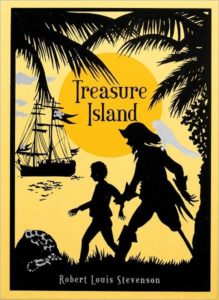 |
Robert Louis Stevenson’s Treasure Island – the all-time classic pirate book – was originally published in 1883 and is now available in any number of editions, including simplified versions for younger readers. |
| The original text of Treasure Island is available online here. |
|
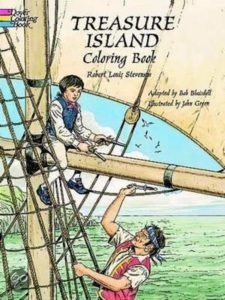 |
The Treasure Island Coloring Book (Dover Publications) has 34 black-line illustrations to color, plus an abbreviated text. |
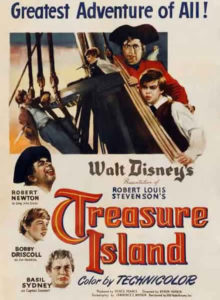 |
There are many movie versions of Treasure Island. Disney’s 1950 movie is rated PG. |
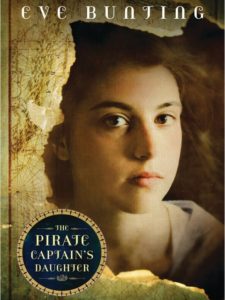
|
Eve Bunting’s The Pirate Captain’s Daughter (Sleeping Bear Press, 2011) begins “I always knew my father was a pirate and I always knew I wanted to be one, too.” Fifteen-year-old Catherine disguises herself as a boy, adopts the name of Charlie, and joins her father on board the ship Reprisal. For ages 12 and up. |
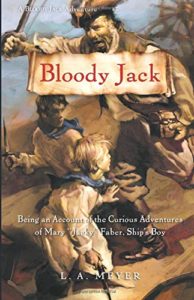
|
Jack, of L.A. Meyers’s Bloody Jack (Graphia, 2010), is also a girl. Mary Faber, orphaned and left homeless on the streets of London, cuts off her hair and lands a job as ship’s boy on the H.M.S. Dolphin. Mary adapts to life on board, picks up the nickname “Bloody Jack” in a pirate skirmish, struggles to cope with her “Deception” as she increasingly matures, and falls in love. For ages 12 and up. |
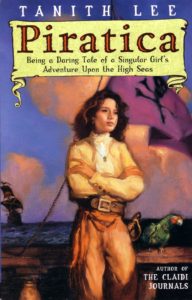
|
In Tanith Lee’s Piratica: Being a Daring Tale of a Singular Girl’s Adventures Upon the High Seas (Dutton Children’s Books, 2003), Miss Artemisia Fitz-Willoughby Weatherhouse takes a tumble down the stairs at the Angels Academy for Young Maidens and suddenly remembers her past: she’s the daughter of the famous pirate captain Molly Faith (a.k.a. Piratica), with whom she spent her early childhood on the high seas. In truth, it turns out that Molly was an actress and Art’s memories are of stage performances – but Art, undeterred, hijacks a galleon and persuades her mother’s former stage crew to accompany her as genuine pirates, under a black-and-pink Jolly Roger. For ages 12 and up. |
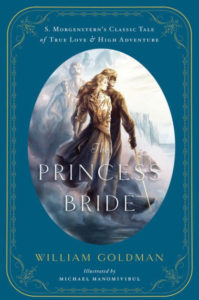
|
William Goldman’s The Princess Bride (Harcourt, 2007) is a brilliant tongue-in-cheek fairy tale filled with “Fencing. Fighting. Torture. Poison. True love. Hate. Revenge. Giants.” – and featuring an enchanting cast of characters, among them Westley, a stable boy turned hero, the beautiful princess Buttercup, the valiant swordsman Inigo Montoya, the evil prince Humperdinck, and the Dread Pirate Roberts. For teenagers and adults. This title appears on many high-school reading lists. |
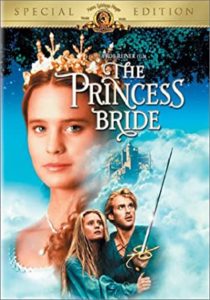 |
Also see the 1987 movie version of The Princess Bride directed by Rob Reiner and starring Cary Elwes, Mandy Patinkin, Robin Wright, and Andre the Giant. Rated PG. (There’s kissing.) |
| Reading Group Guide: This Princess Bride has a list of discussion questions to accompany the book (or movie). |
